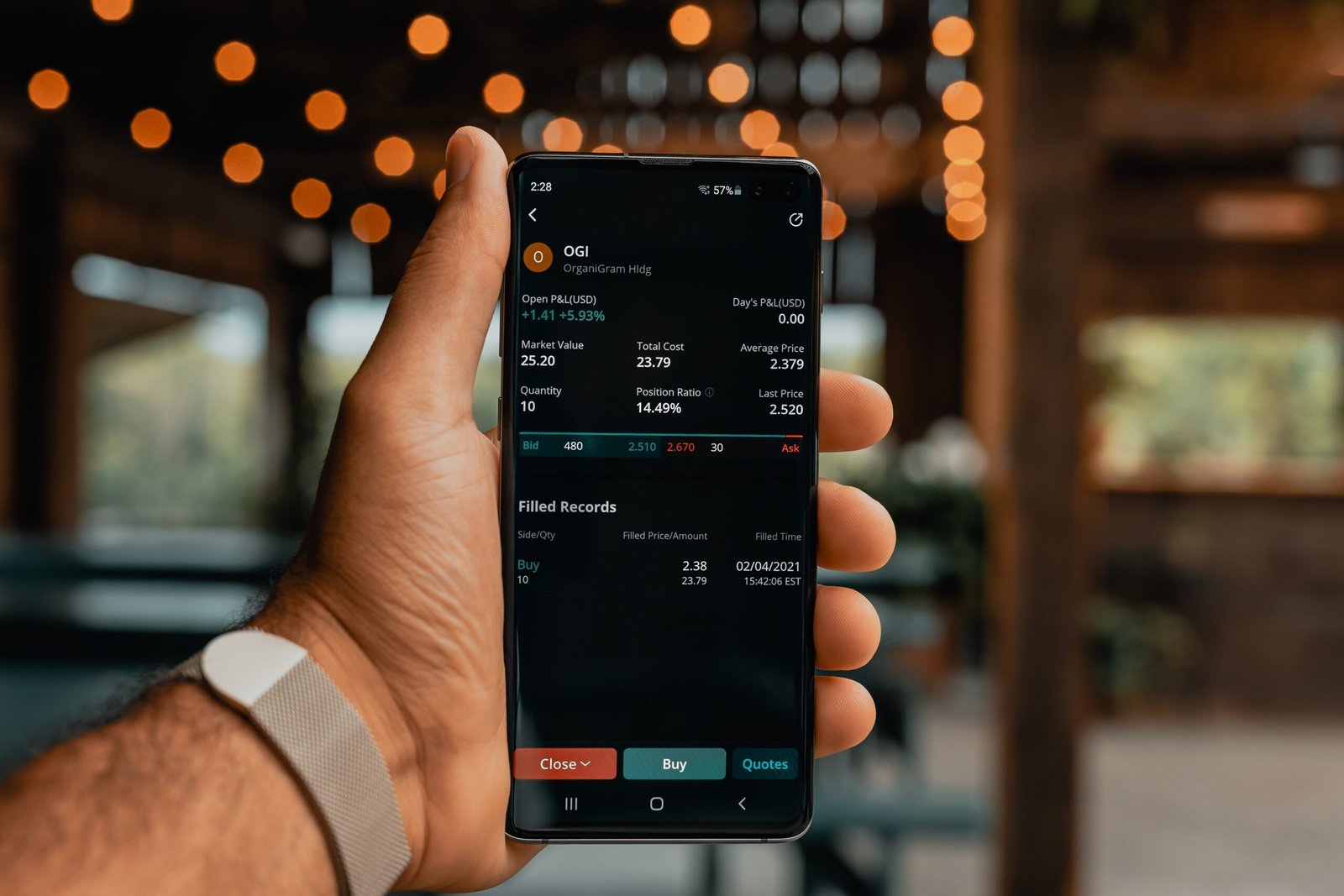The ultralow mortgage rates that have been prevalent during the pandemic have created a unique phenomenon in the U.S. housing market. Like “golden handcuffs,” these low rates have locked homeowners in place, making them reluctant to sell and move to a new home. The reason for their hesitation is simple: if they were to sell their homes and buy a new one, they would likely face significantly higher mortgage rates, resulting in a significant increase in their monthly payments. As a result, the market has seen a significant decrease in new listings, with fewer homeowners willing to take on the financial shock of higher rates. This article explores the impact of these “golden handcuffs” on the housing market and examines the factors contributing to the decline in transaction volume.
Read more about the Latest Money News
The Concept of ‘Golden Handcuffs’
The term ‘golden handcuffs’ originated in the late 1970s to describe the phenomenon where ambitious professionals would choose to remain in secure, high-paying jobs rather than explore other opportunities or start their own businesses. The main reason for this was the generous compensation packages that made it difficult for these professionals to willingly give up the financial stability provided by their current jobs.
Today, the concept of ‘golden handcuffs’ can be applied to the U.S. housing market, specifically in relation to ultralow mortgage rates. During the pandemic, mortgage rates reached historic lows, creating an unprecedented situation for homeowners. These ultralow rates function as a type of ‘golden handcuff,’ with many homeowners reluctant to move or sell their homes. The reason for this reluctance is the fear of losing their low mortgage rates and facing significantly higher interest rates if they were to buy a new home. The potential payment shock is simply too steep for many would-be sellers and buyers to handle.
Ultralow Mortgage Rates as Golden Handcuffs
The impact of ultralow mortgage rates on homeowners is significant. Homeowners who were fortunate enough to secure low rates during the pandemic are now facing a dilemma. While the low rates have made their mortgage payments more affordable, they are now hesitant to move or sell their homes due to the potential of higher rates. This hesitancy has led to a decrease in new listings on platforms such as Realtor.com.
To understand the impact of different interest rates on mortgage payments, let’s consider an example. Suppose a borrower has a $500,000 mortgage at a 3% interest rate, resulting in a monthly payment of $2,108 over a 30-year loan. However, if the interest rate increases to 7.08% (the average rate in November 2023), the monthly payment would skyrocket to $3,353. This significant increase in mortgage payment illustrates why homeowners are reluctant to give up their low rates.

Read more about the Latest Money News
Effect on the Housing Market
The ‘golden handcuffs’ created by ultralow mortgage rates have had a noticeable effect on the housing market. One of the main consequences is the decrease in new listings on Realtor.com. In November 2023, there were 16% fewer new listings compared to the previous year. This decrease reflects homeowners’ reluctance to sell their homes and move due to the potential increase in mortgage rates.
Furthermore, the ‘lock-in’ effect caused by low mortgage rates has resulted in a lack of churn in the market. Churn refers to people selling their current homes to buy new ones. With homeowners unwilling to give up their low rates, there is a shortage of properties available for sale. This lack of churn has led to a stagnation in the resale/existing market.
The only transactions occurring in the market are driven by life events that force sellers’ hands, such as death, divorce, or job relocation. These life events compel homeowners to sell their homes, regardless of the potential increase in mortgage rates.
Lock-in Effect and Homeowners
The lock-in effect is a result of homeowners locking in low, fixed-rate mortgages for 30 years. These mortgages provide stability and affordability, making it difficult for homeowners to consider selling their homes and moving to a new one with higher interest rates. The fear of losing their low rates acts as a disincentive for homeowners to list their homes for sale.
As a result of this lock-in effect, homeowners become a strong presence in the housing market. They are the ones driving the limited number of transactions that occur, while potential sellers/buyers are deterred by the possibility of higher rates. This dynamic contributes to the stability of national home prices.

Impact on Affordability and Prices
The ‘golden handcuffs’ created by ultralow mortgage rates have had a significant impact on housing affordability and prices. The decrease in housing activity, particularly in existing home sales, can be attributed to the lock-in effect. Homeowners, who have secured low, fixed-rate mortgages, have not experienced the decline in affordability that potential buyers face. This lack of affordability, combined with the fear of higher mortgage rates, has resulted in a decrease in housing activity.
However, despite the decrease in activity, national home prices have remained relatively stable. The lock-in effect, which prevents a significant number of homes from entering the market, has limited the supply of available homes for sale. This lack of supply has balanced out the decrease in demand, leading to stable prices.
The lock-in effect is considered the biggest reason for the stability of home prices in the face of decreasing affordability. Homeowners’ unwillingness to give up their low rates and list their homes for sale has created a situation where supply and demand are relatively balanced.
Other Factors Affecting the Housing Market
While the ‘golden handcuffs’ created by ultralow mortgage rates are a significant factor affecting the housing market, other factors also play a role. The introduction of new technology and regulations has influenced the market dynamics. Advancements in online platforms and digital tools have made it easier for individuals to search for properties and complete transactions. Additionally, regulatory changes, such as stricter lending standards, have affected the accessibility and availability of mortgages.
Changing demographics and preferences also shape the housing market. As the population evolves, so do the demands and preferences of potential homebuyers. Housing developers and industry professionals need to adapt to these changes to meet the evolving needs of buyers.

Possible Solutions and Future Outlook
To address the ‘golden handcuffs’ phenomenon and incentivize home selling and buying, policy measures can be implemented. These measures could include offering financial incentives to homeowners to list their homes for sale and providing affordable financing options for potential buyers. By reducing the financial barriers and addressing the fears associated with higher mortgage rates, these policy measures can encourage more activity in the housing market.
However, the future outlook of the housing market is not solely dependent on policy measures. The potential impact of rising interest rates on the market needs to be considered. If interest rates increase significantly, it could further deter homeowners from selling and buyers from entering the market. Monitoring interest rate trends and adapting strategies accordingly will be crucial for the future of the housing market.
Expert Opinions
According to Morgan Stanley’s analysis and findings, the lock-in effect created by low mortgage rates is a significant factor in the current housing market dynamics. Homeowners with low, fixed-rate mortgages are considered ‘strong hands’ in the market, while potential sellers and buyers face barriers due to the fear of higher rates. The decline in housing activity and stability in home prices can be attributed to this lock-in effect.
Insights from other industry experts also support the idea that ultralow mortgage rates have created a ‘golden handcuffs’ situation in the housing market. The reluctance of homeowners to give up their low rates and the decrease in new listings are consistent observations made by experts.
Historical Comparison and Lessons Learned
When comparing the current housing market to previous cycles and market dynamics, it becomes evident that the ‘golden handcuffs’ phenomenon is unique to the current situation. The ultralow mortgage rates and the lock-in effect have created a challenging environment for potential sellers and buyers. Lessons can be learned from this situation for both homebuyers and industry professionals.
Homebuyers should carefully consider their mortgage options and evaluate the long-term implications of the rates they secure. It is important to understand how future rate increases could impact affordability and the decision to sell or buy a home. Additionally, industry professionals should adapt their strategies to cater to the needs and preferences of homeowners locked into low-rate mortgages.
Conclusion
Ultralow mortgage rates have created a ‘golden handcuffs’ situation in the U.S. housing market. Homeowners with low, fixed-rate mortgages are reluctant to sell their homes and move due to the potential increase in mortgage rates. This reluctance has led to a decrease in new listings and a lack of churn in the market. The lock-in effect caused by low rates has drained housing activity while maintaining stable home prices.
While the ‘golden handcuffs’ phenomenon poses challenges to the housing market, policy measures can be implemented to incentivize home selling and buying. Monitoring the potential impact of rising interest rates is crucial for the future outlook of the market. By considering historical comparisons, learning from the current situation, and heeding expert opinions, the housing market can navigate the complexities created by ultralow mortgage rates and adapt to future trends.











